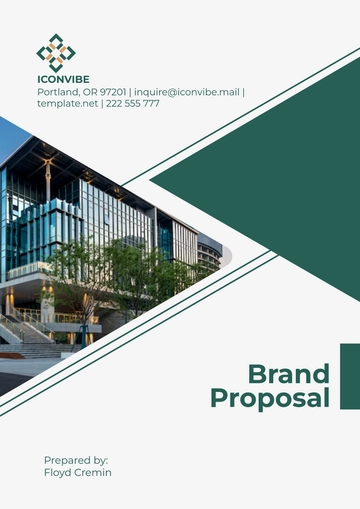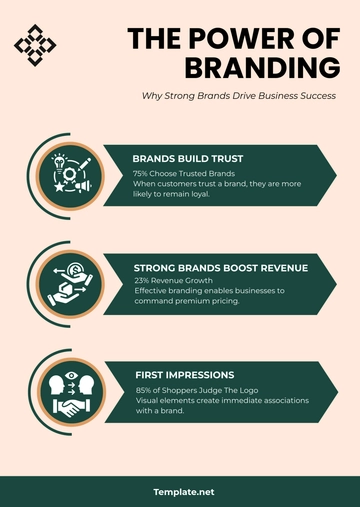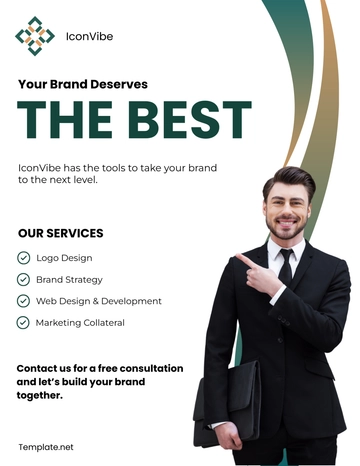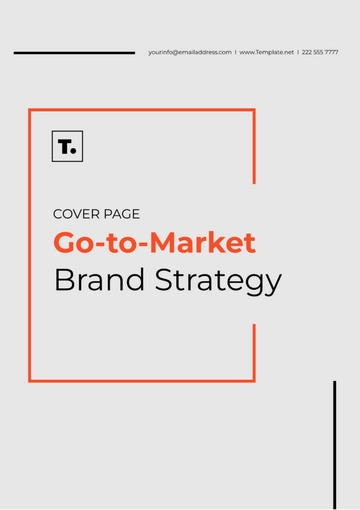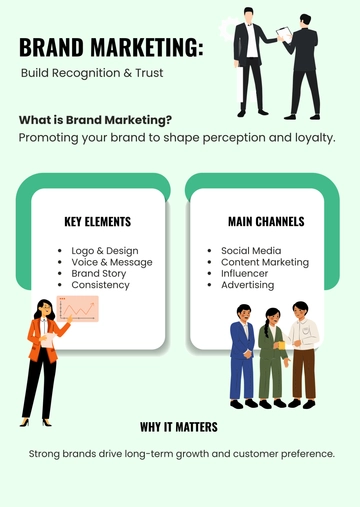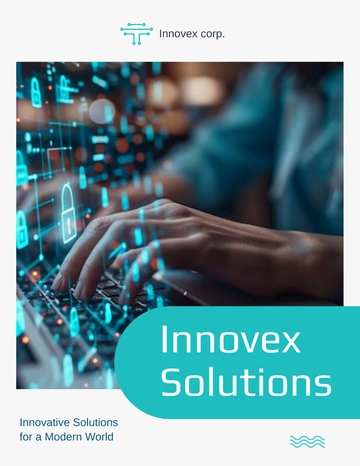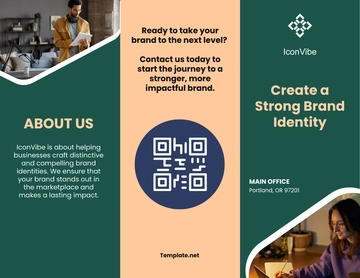Free Car Rental Brand Strategy
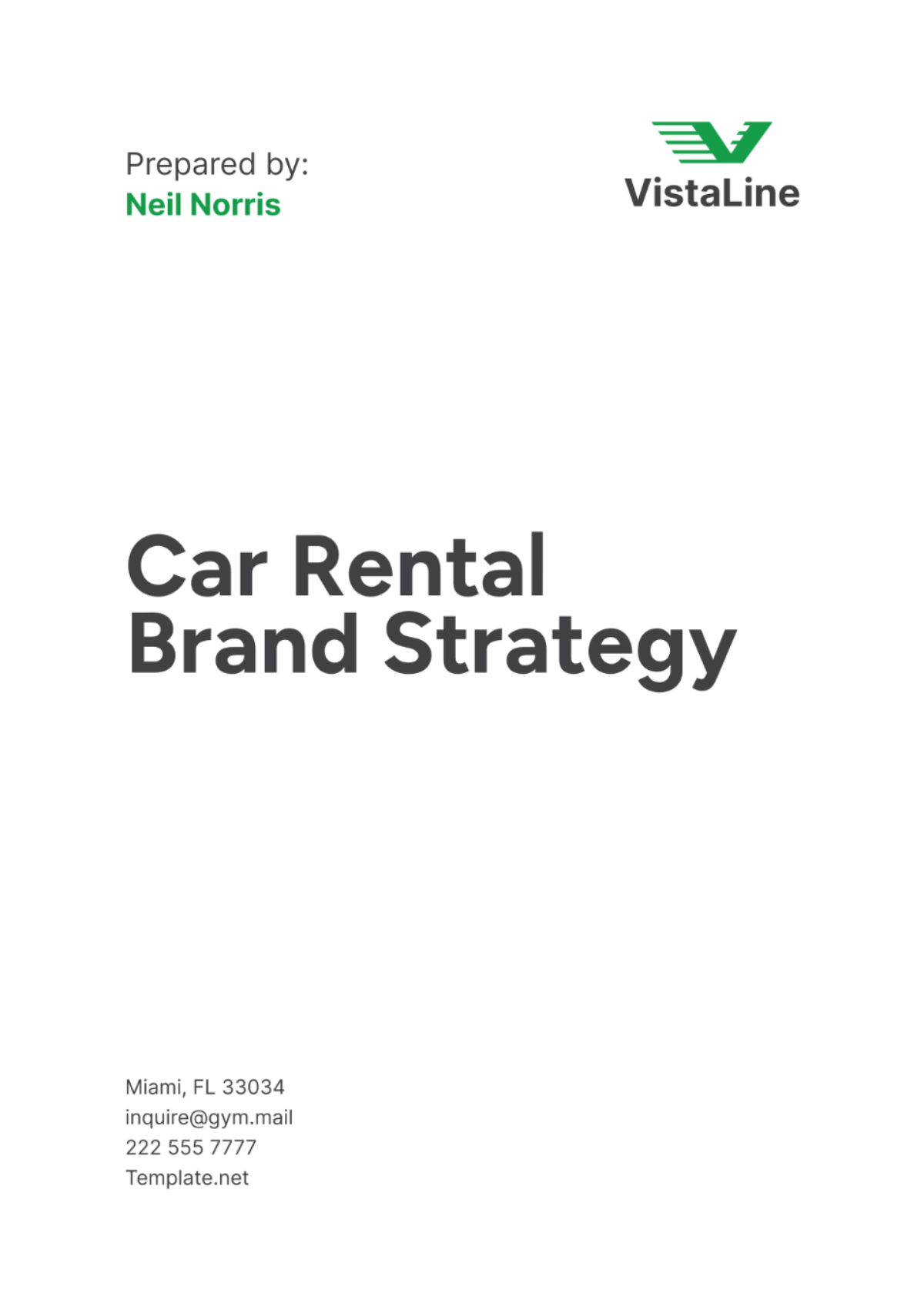
I. Executive Summary
A. Overview of the Car Rental Market
The global car rental market is witnessing robust growth, driven by increasing travel activities across both leisure and business segments. As international and domestic travel rebound, demand for flexible and reliable transportation solutions continues to rise. Our brand aims to capitalize on these trends by offering a diverse fleet and exceptional customer service tailored to varied traveler needs.
B. Summary of Current Brand Positioning
Our brand currently holds a competitive position in the mid-tier segment, known for its reliability and straightforward pricing. While we have a strong presence in key markets, there is an opportunity to strengthen brand differentiation through enhanced service offerings and targeted marketing campaigns that emphasize our unique value propositions.
C. Strategic Objectives of the Brand Strategy
Our strategic objectives focus on expanding market share through targeted customer acquisition strategies, enhancing customer loyalty through personalized service experiences, integrating sustainable practices into our operations, and leveraging technology to streamline processes and improve customer engagement.
II. Situation Analysis
A. Market Analysis
Market Size and Growth Trends
The global car rental market is projected to grow at a compound annual growth rate (CAGR) of 5% over the next five years, driven by increasing disposable incomes, urbanization, and a rising preference for rental services over vehicle ownership.
Competitive Landscape
Our competitors range from global giants with extensive fleets to local players offering niche services. Each competitor brings unique strengths, such as brand recognition, service diversity, or geographic reach, posing both challenges and opportunities for market penetration.
Customer Segmentation and Targeting
Our primary segments include business travelers seeking efficiency, vacationers prioritizing comfort and convenience, and local renters looking for cost-effective solutions. Understanding these segments' preferences and behaviors guides our strategic marketing initiatives and service enhancements.
B. SWOT Analysis
Strengths
The company has built a strong and well-recognized brand reputation over the years. It also boasts an extensive network of rental locations, allowing it to serve a wide geographical area. Additionally, the company maintains a diversified fleet of vehicles that cater to the varying needs of its diverse customer base, ensuring that there is a suitable option for every type of rental requirement.
Weaknesses
The company experiences several significant challenges that hinder its competitive edge in the market. First, there is a limited differentiation in its service offerings compared to what premium competitors provide. This lack of distinctiveness makes it difficult for the company to stand out and attract customers looking for unique or superior service options. The company relies too much on traditional booking channels, missing out on digital-savvy consumers. Its inconsistent customer satisfaction also threatens loyalty and trust. Addressing these issues is key to boosting market presence and performance.
Opportunities
The industry is experiencing an increasing demand for eco-friendly vehicle options, driven by a growing awareness of environmental sustainability. At the same time, there have been significant technological advancements in the fields of fleet management and customer engagement, which are transforming operational efficiencies and customer experiences. Additionally, there are numerous opportunities for expansion and growth in emerging markets around the world, which present untapped potential for businesses looking to expand their reach and influence.
Threats
The intense competition stemming from both global and regional industry players; the economic fluctuations that significantly impact travel budgets; and the regulatory changes which affect operational costs and procedures.
C. Consumer Insights and Trends
Customer Preferences and Behaviors
Increasing preference for seamless booking experiences, transparent pricing, and flexible rental terms. Customers also prioritize vehicle quality, cleanliness, and the availability of advanced features such as GPS navigation and entertainment systems.
Technological Trends
Adoption of mobile apps for convenient booking and management, integration of AI for personalized customer interactions, and the emergence of electric and hybrid vehicles as sustainable rental options. Embracing these trends enhances our brand's appeal and operational efficiency.
III. Brand Vision and Mission
A. Vision Statement
Our vision is to revolutionize the car rental industry by becoming the foremost provider of sustainable and innovative mobility solutions worldwide. We aim to set new standards in customer service excellence, environmental responsibility, and technological advancement.
B. Mission Statement
Our mission is to empower travelers with seamless access to reliable and diverse vehicle options, ensuring exceptional service quality and customer satisfaction at every touchpoint. We are committed to fostering a culture of innovation, sustainability, and social responsibility in all aspects of our operations.
C. Core Values and Brand Personality
At the core of our brand are values of integrity, reliability, customer-centricity, and continuous improvement. Our brand personality is defined by a blend of professionalism, approachability, and a forward-thinking attitude that resonates with modern travelers seeking dependable and sustainable mobility solutions.
IV. Brand Positioning
A. Positioning Statement
[Company Name] stands as the preferred choice for travelers seeking reliability, affordability, and sustainability in car rentals. By offering a wide range of vehicles, personalized service experiences, and innovative technological solutions, we ensure that every journey with us is efficient, comfortable, and environmentally conscious.
B. Points of Differentiation from Competitors
Wide Selection of Eco-friendly Vehicles
Pioneering the transportation sector with an extensive array of electric and hybrid vehicles, our company is dedicated to addressing the increasing demand for sustainable and environmentally friendly mobility solutions. By offering a broad spectrum of advanced, energy-efficient options, we are committed to leading the charge towards a greener future, ensuring that our diverse fleet can cater to the evolving needs of our eco-conscious customers and contribute to the global movement for sustainable transportation.
Personalized Customer Service
By offering customized solutions specifically designed to meet the unique needs of each client, along with proactive assistance that surpasses the usual service expectations, we are able to greatly enhance customer satisfaction and foster increased loyalty among our clientele.
Technological Advancements
Wholeheartedly incorporating the latest advancements in technology, including artificial intelligence-powered customer interactions and the smooth, user-friendly experiences provided by mobile applications, to facilitate effortless booking and efficient vehicle management.
C. Target Market Identification and Segmentation
Business Travelers
Focus on corporate clients needing reliable transportation solutions that optimize productivity and comfort during business trips.
Vacationers
Catering to leisure travelers seeking convenience and flexibility in exploring destinations with family and friends.
Local Renters
Serving community members with cost-effective rental options for short-term transportation needs, ensuring affordability without compromising quality or service excellence.
V. Brand Identity
A. Brand Logo and Visual Identity
Our brand logo embodies simplicity and modernity, utilizing a sleek design with vibrant colors that evoke a sense of reliability and innovation. The visual identity extends across all touchpoints, ensuring consistency in branding and reinforcing our commitment to quality and customer satisfaction.
B. Brand Voice and Tone
Our brand communicates with a friendly and professional voice, maintaining clarity and approachability in all customer interactions. The tone is informative yet engaging, reflecting our dedication to providing transparent and reliable information throughout the rental journey.
C. Brand Messaging and Tagline
Our messaging focuses on empowering travelers with smart mobility solutions that are easy to access and environmentally responsible. Our tagline, "Driving Innovation, Sustaining Mobility," encapsulates our mission to lead the industry through innovation while promoting sustainable practices for future generations.
VI. Marketing and Communication Strategy
A. Integrated Marketing Communications Plan
Advertising and Promotions
We will launch targeted advertising campaigns highlighting our unique offerings, such as eco-friendly vehicles and personalized customer service, through digital channels, print media, and strategic partnerships.
Digital Marketing Strategies
Utilizing SEO and SEM to enhance online visibility, coupled with engaging social media campaigns that showcase customer testimonials and promotions to drive engagement and conversion.
Social Media Engagement
Interactive content and community-building initiatives to foster brand advocacy and customer loyalty, leveraging platforms like Facebook, Instagram, and LinkedIn.
B. Public Relations and Media Relations
Press Releases and Media Kits
Regular updates on new service launches, partnerships, and sustainability initiatives to enhance brand visibility and credibility among stakeholders and the media.
Sponsorship and Partnership Opportunities
Collaborating with travel influencers, industry associations, and eco-conscious organizations to amplify our brand message and reach new customer segments aligned with our values.
C. Customer Relationship Management (CRM) Strategy
Loyalty Programs
Implementing a tiered loyalty program that rewards frequent renters with exclusive benefits, discounts, and personalized offers based on rental history and customer preferences.
Customer Feedback and Engagement Initiatives
Continuous monitoring of customer feedback through surveys and reviews, coupled with proactive measures to address concerns and improve service delivery for enhanced customer satisfaction and retention.
VII. Customer Experience Strategy
A. Reservation and Booking Process
Streamlining the online booking platform with user-friendly interfaces and mobile compatibility to enable seamless reservation management from initial inquiry to vehicle pickup, enhancing convenience and accessibility for customers.
B. Rental Experience and Vehicle Quality
Ensuring a superior rental experience with a well-maintained fleet that includes a variety of vehicle types, equipped with modern amenities and safety features. Regular inspections and cleaning protocols uphold high standards of vehicle quality and cleanliness, exceeding customer expectations.
C. Customer Support and Service Standards
Providing 24/7 customer support through multiple channels, including phone, email, and live chat, staffed by knowledgeable agents trained to handle inquiries promptly and professionally. Service standards emphasize responsiveness, empathy, and effective problem resolution to uphold our brand promise of exceptional service quality.
VIII. Operational Strategy
A. Fleet Management and Maintenance
Implementing rigorous maintenance schedules and quality assurance checks to ensure the safety, reliability, and efficiency of our fleet. Investment in advanced fleet management technologies allows for real-time monitoring of vehicle performance and proactive maintenance to minimize downtime and optimize operational efficiency.
B. Pricing and Revenue Management
Developing dynamic pricing strategies based on market demand, seasonal trends, and competitor analysis to maximize revenue while offering competitive rates that appeal to budget-conscious travelers. Promotional pricing and package deals are tailored to attract new customers and encourage repeat business.
C. Technology Integration and Innovation
Embracing technological advancements such as IoT for fleet tracking, predictive maintenance, and customer engagement tools to enhance operational efficiency and service delivery. Continuous innovation in digital solutions, including mobile apps and online platforms, ensures seamless customer interactions and operational excellence across all touchpoints.
IX. Sustainability Initiatives
A. Environmental Policies and Practices
Committed to reducing our carbon footprint, we implement stringent environmental policies across all operations. This includes optimizing vehicle routing to minimize emissions, promoting energy-efficient practices at rental locations, and adopting renewable energy sources where feasible.
B. Green Fleet Options and Eco-friendly Initiatives
We offer a range of eco-friendly vehicles, including hybrid and electric models, to provide customers with sustainable transportation choices. Partnering with manufacturers and suppliers committed to eco-friendly practices ensures our fleet remains at the forefront of environmental stewardship.
C. Community and Social Responsibility Programs
Engaging in community initiatives and partnerships that promote environmental awareness and conservation. This includes sponsorship of local events, employee volunteer programs, and collaborations with non-profit organizations dedicated to sustainability and community well-being.
X. Implementation Plan
A. Action Steps and Timeline
Phase 1: Launch eco-friendly vehicle options in major urban centers by Q3.
Phase 2: Upgrade online booking system for enhanced user experience by Q4.
Phase 3: Roll out loyalty program enhancements and customer engagement initiatives throughout the year.
B. Resource Allocation and Budgeting
Allocating resources towards technology upgrades, fleet expansion, and sustainability initiatives. Budgetary considerations include marketing expenditures, operational enhancements, and investments in staff training and development.
C. Key Performance Indicators (KPIs) and Measurement Metrics
Monitoring KPIs such as customer satisfaction scores, market share growth, and environmental impact metrics. Quarterly and annual assessments will gauge progress against strategic objectives and guide adjustments to ensure alignment with business goals.
XI. Monitoring and Evaluation
A. Performance Monitoring and Reporting
Regularly evaluating performance metrics to track the effectiveness of implemented strategies and initiatives. Detailed reports and dashboards provide insights into areas of strength and opportunities for improvement across marketing, operations, and customer service.
B. Feedback Loops and Continuous Improvement
Proactively soliciting customer feedback through surveys, reviews, and focus groups to identify areas for enhancement. Feedback loops inform continuous improvements in service delivery, product offerings, and overall customer experience to maintain competitiveness and customer loyalty.
C. Crisis Management and Contingency Planning
Developing robust contingency plans to address potential disruptions, including natural disasters, economic downturns, and operational challenges. Rapid response protocols and communication strategies ensure minimal impact on service delivery and customer satisfaction during crises.
XII. Conclusion
A. Summary of Key Strategic Decisions
Emphasizing sustainability as a core brand value and competitive advantage.
Investing in technology to enhance operational efficiency and customer engagement.
Strengthening market position through differentiated service offerings and strategic partnerships.
B. Future Outlook and Growth Opportunities
Expanding into emerging markets with high travel demand and untapped potential.
Innovating with new mobility solutions and service enhancements to meet evolving customer expectations.
Continuing to prioritize customer-centricity, sustainability, and operational excellence to drive long-term growth and profitability.
- 100% Customizable, free editor
- Access 1 Million+ Templates, photo’s & graphics
- Download or share as a template
- Click and replace photos, graphics, text, backgrounds
- Resize, crop, AI write & more
- Access advanced editor
Plan your Car Rental Brand Strategy effortlessly with the customizable and editable template from Template.net. Tailor your strategy with precision using the AI Editor Tool, ensuring it aligns perfectly with your business goals. Crafted for marketing professionals, this template streamlines strategic planning, offering flexibility and ease in creating a comprehensive brand strategy.

